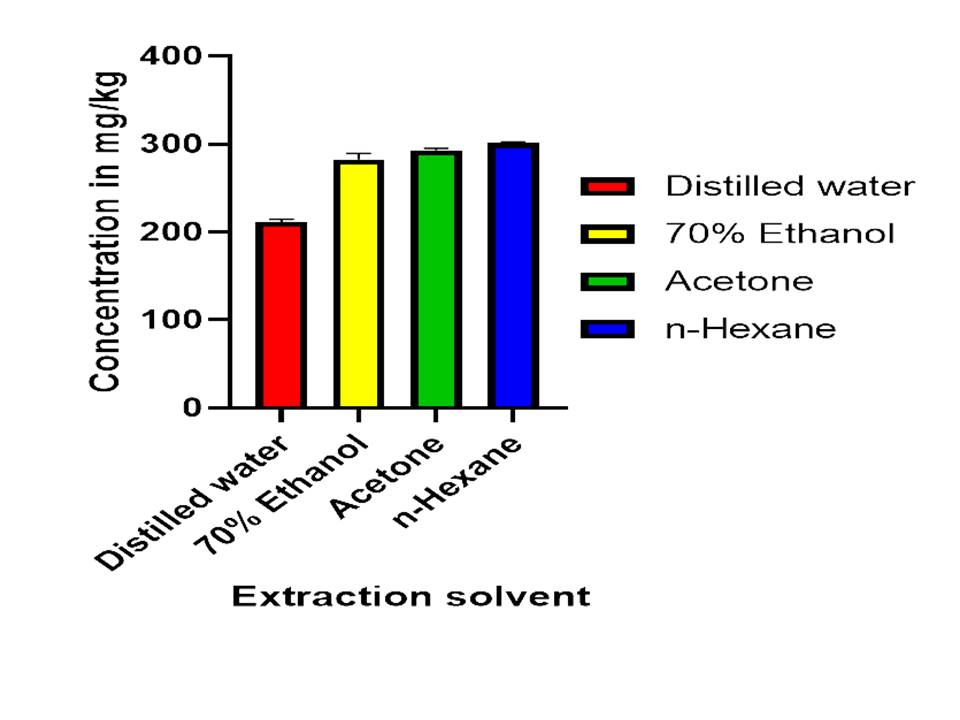Chemical Science & Engineering Research
Title
Cyanide Content Analysis in Selected Food Crops (Soya Beans, Maize, White Beans), Nuts (Ground Nut, Tiger Nut) Cultivated and Consumed in Nigeria and, Espouse of Environmental Toxicants as Epigene (s) Modifier
Authors
Johnson Adejoh,a,b Faith E. Idoko,b Edwin A. Ujahb and Michael P. Okoh*a
aDepartment of Medical Biochemistry, College of Health Sciences, University of Abuja, P.M.B 117, FCT, Abuja, Nigeria
bDepartment of Science Laboratory Technology, Benue State Polytechnic Ugbokolo, P.M.B. 001, Ugbokolo, Benue State, Nigeria
*Corresponding author E-mail address: michael.okoh@uniabuja.edu.ng (Michael P. Okoh)
Article History
Publication details: Received: 19th March 2020, Revised: 17th May 2020, Accepted: 18th May 2020, Published: 20th May 2020
Cite this article
Johnson A.; Faith E. I.; Edwin A. U.; Michael P. O. Cyanide Content Analysis in Selected Food Crops (Soya Beans, Maize, White Beans), Nuts (Ground Nut, Tiger Nut) Cultivated and Consumed in Nigeria and, Espouse of Environmental Toxicants as Epigene (s) Modifier. Chem. Sci. Eng. Res., 2020, 2(4), 26-33.

Abstract
Food crops contain essential nutrients, necessary for proper developments. Hence, as a plant group, they are cultivated for human consumption to provide nutritional supports for the body. Experimental evidence has shown that some food crops/nuts contain Cyanogenic glucosides, capable of producing cyanide upon enzymatic hydrolysis. This current work focuses on the qualitative and quantitative analysis of the cyanide contents of soya beans, maize, white beans, groundnut and tiger nut using different extraction solvents (distilled water, 70% ethanol, acetone and n-hexane). The qualitative analysis shows, all the samples experimented contains hydrogen cyanide in the form of cyanogenic glucosides. Using UV-Vis spectrophotometer, the cyanide concentration for each crops/nut samples was analysed quantitatively after solvent extractions. The tiger nut sample had the least cyanide concentrations (180.67±5.03 mg/kg, 210.67±3.79 mg/kg, 223.33±2.89 mg/kg and 233.33±2.89 mg/kg) in all the solvents used for the extraction process. However, the concentrations were observed to increase as the polarity of the solvents decreases from distilled water to n-hexane. White beans had high concentration of cyanide in distilled water (261.33±3.51 mg/kg), acetone (365.33±2.52 mg/kg) and n-hexane (370.00±3.00 mg/kg). Also, maize presented a high concentration of cyanide (343.33±2.89 mg/kg) in 70% ethanol. Cyanide intakes has serious consequences including; effects on mitochondria bioenergetics, triggering ROS formation, enhance carcinogenesis process mediated by DNA methylation, and it affects other human hormonal functions thought to be involved in infertility, delay pregnancy due to changes in the metabolic demands of the pre-implantation embryo. Thus, it is imperative that, for human consumption, an initial detoxification process is advised as a precaution for food crops with potential for high cyanide concentrations.
Keywords
Cyanide; Food crops; n-hexane; UV-Vis Spectrophotometer; Carcinogenesis; Bioenergetics; Mitochondria; Polarity